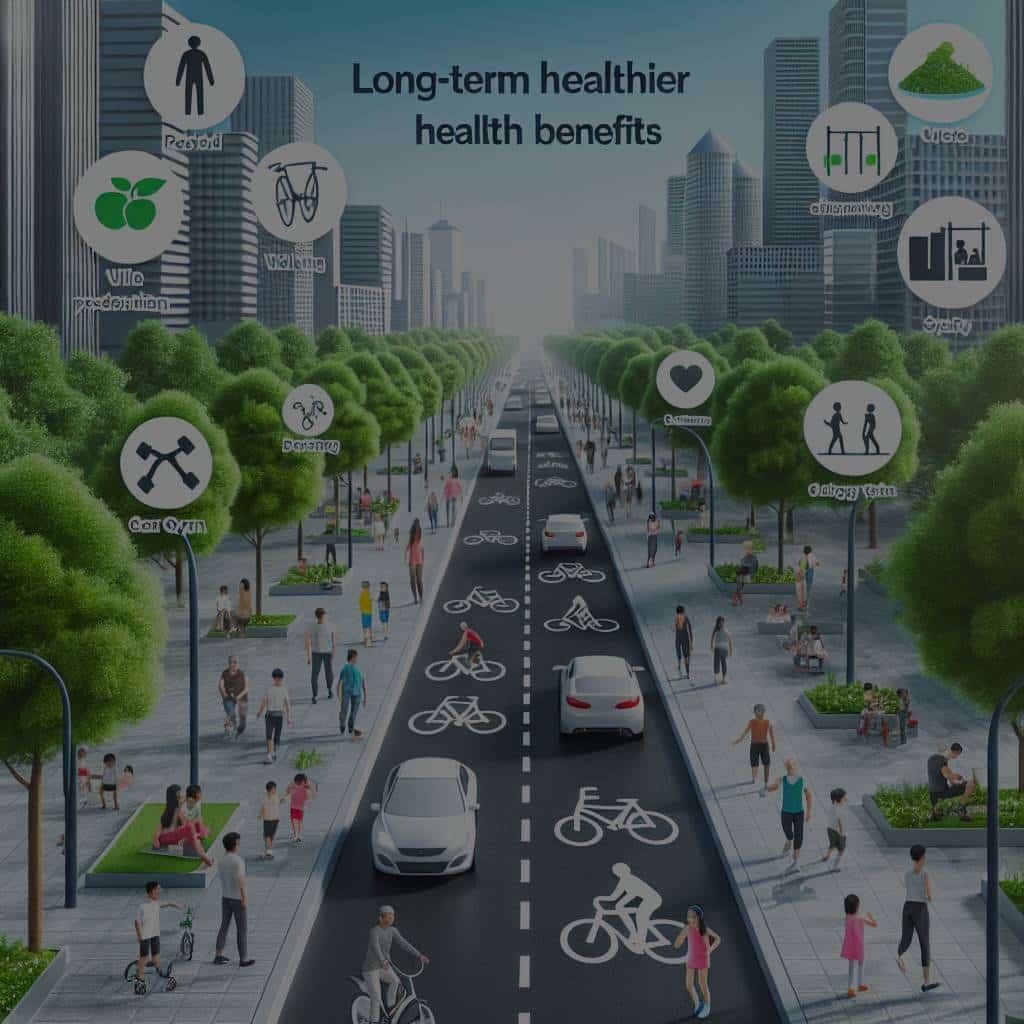What Are the Long-Term Health Benefits of Living in Car-Free Urban Quarters?

As residents of modern society, we often get swept up in the hustle and bustle of city life. The scholar in us might be aware of the long-term health benefits of living in car-free urban quarters, but it isn’t always easy to put this knowledge into practice. Today, we will explore the various ways how living in car-free areas in cities can positively impact public health for the long term. The keywords that we will focus on include city, cities, pollution, people, public, will, traffic, health, car, pubmed, urban, transport, streets, air, cars, open, york, transportation, and street.
The Impact of Cars on Urban Health
Intuitively, we understand the harmful effects of cars in our cities. The constant hum of engines, the incessant honking during rush hours, and the grey smog that often blankets the skyline – these are all tell-tale signs of a city choking on its transportation system. However, what does scientific research say about the health impacts of cars in our cities?
In the same genre : Does the Consumption of Prebiotic-rich Foods Alleviate Symptoms of IBS?
According to a study published on Pubmed, car emissions contribute significantly to air pollution in urban areas, leading to an increase in respiratory illnesses among city dwellers. The same study also noted that traffic noise is a major cause of stress and anxiety in people living near busy roads.
Furthermore, cars take up a lot of space. Streets are often congested with traffic, making them unsafe and unpleasant for pedestrians. The lack of open spaces in many cities also means that people have fewer opportunities for physical activity, which can lead to a host of health problems such as obesity and heart disease.
Also read : What Are the Health Benefits of Switching to a Standing Desk at Work?
The Advantages of Car-Free Urban Quarters
Now, let’s turn our attention to the benefits of car-free urban quarters. These are areas within cities where cars are either completely banned or heavily restricted.
Initially, the most apparent advantage is the reduction in air and noise pollution. Without cars on the streets, the air becomes cleaner and the ambient noise level decreases significantly. This not only improves the overall quality of life but also positively impacts public health. People living in such areas have been found to be less likely to suffer from respiratory diseases and stress-related disorders.
Moreover, when streets are free from cars, they become safer for pedestrians and cyclists. This encourages more people to walk or bike to their destinations, leading to increased physical activity and improved cardiovascular health.
Public Support for Car-Free Urban Quarters
For car-free urban quarters to become a reality, public support is crucial. People must understand and accept the benefits of such initiatives.
Fortunately, public opinion seems to be in favor of reducing car use in cities. A recent poll conducted in New York, for example, found that a majority of people would support measures to limit car use in certain areas of the city. The reasons cited for this support were varied, but health benefits and improved quality of life were among the most commonly mentioned.
This positive public sentiment is a promising sign that car-free urban quarters could become more prevalent in the future. However, it is also important to address concerns about accessibility and convenience, as these are often cited as reasons people are hesitant to give up their cars.
How Cities Are Implementing Car-Free Initiatives
With the support of the public, cities around the world are starting to implement car-free initiatives. These range from car-free days to permanent car-free zones in certain parts of the city.
For instance, New York City has implemented a car-free Earth Day since 2016, where several streets are closed off to vehicles. The city also has plans to experiment with more permanent car-free zones.
In European cities, car-free initiatives are even more prevalent. Oslo, for instance, has removed parking spaces in its city center to discourage car use, and Madrid has banned cars from its city center entirely.
These initiatives are not without their challenges, but they represent important steps towards creating healthier, more livable cities.
The Future of Car-Free Urban Quarters
The future of car-free urban quarters looks bright. With increasing public support and successful examples from cities around the world, it seems likely that more and more urban areas will become car-free.
This will not only lead to cleaner, safer, and more pleasant urban environments, but it will also contribute significantly to public health. A future where our cities are not dominated by cars is a future where people can lead healthier, longer lives.
Remember, the choice to support car-free urban quarters is not just about improving our cities. It’s about improving our health and our quality of life. And that’s something worth fighting for.
Active Transportation and Physical Activity
An often overlooked benefit of car-free urban quarters is the increased opportunity for active transportation. As more cities begin to limit car usage, it becomes easier and more convenient for residents to opt for alternative modes of transportation such as cycling, walking, or public transit. These options, undoubtedly, offer significant health benefits due to the physical activity they involve.
In an article published on PubMed Google, a study revealed that residents of car-free zones were twice as likely to achieve the recommended daily physical activity level compared to those living in areas with a high density of cars. Regular physical activity, as we know, can contribute to lower body mass index (BMI), improved cardiovascular health, and an overall decrease in the risk of chronic diseases.
Not only does this mode of transportation encourage physical activity, but it also fosters social interaction and engagement – an essential aspect of mental health. Walkable neighborhoods with easy access to amenities and green spaces make it more likely for residents to have spontaneous interactions, fostering a sense of community and improving overall well-being.
Moreover, Google Scholar research has indicated that cities with comprehensive public transportation systems can significantly reduce obesity rates. For instance, a case study on San Francisco in the United States showed a reduction in obesity rates following the expansion of their public transit system.
Reducing Air Pollution and Enhancing Air Quality
Living in car-free urban quarters has a profoundly positive impact on air quality. Cars, particularly those running on fossil fuels, are a primary source of air pollution in cities. This pollution, including harmful particulates and greenhouse gases, leads to poor air quality and contributes to various health issues, including respiratory problems, cardiovascular diseases, and premature death.
A PMC free article further elaborates this by stating that air pollution from traffic is associated with an estimated 4.2 million premature deaths worldwide each year. Therefore, reducing car usage can significantly improve air quality and, subsequently, public health.
Without cars, cities and their residents can breathe easier. For example, after implementing a car-free day once a week, a city in the United States saw a 20% reduction in air pollution levels. This reduction brings about immediate health benefits for city dwellers and contributes to the global fight against climate change.
Moreover, the switch to active and public transport modes in urban areas can also lead to a substantial decrease in carbon emissions, contributing to the broader environmental and public health goals.
Conclusion
In conclusion, the transformation of urban quarters into car-free zones presents an effective solution for healthier, more sustainable cities. While the shift may initially come with challenges, the long-term health benefits of increased physical activity, improved air quality, and a more engaged community are clear.
The scientific evidence from PubMed, Google Scholar, and other reputable sources provide compelling reasons for cities to reduce car usage and promote active and public transport options. From New York City to San Francisco, urban areas across the United States and beyond are recognizing these benefits and are taking steps to realize the vision of car-free quarters.
By embracing car-free urban quarters, we are not just investing in our cities’ future. We are investing in a healthier, happier, and more sustainable lifestyle for ourselves and generations to come. As more cities join this momentum, we come closer to creating urban environments where the quality of life is the priority, and where the health impacts of our choices are not just an afterthought but a guiding principle.
